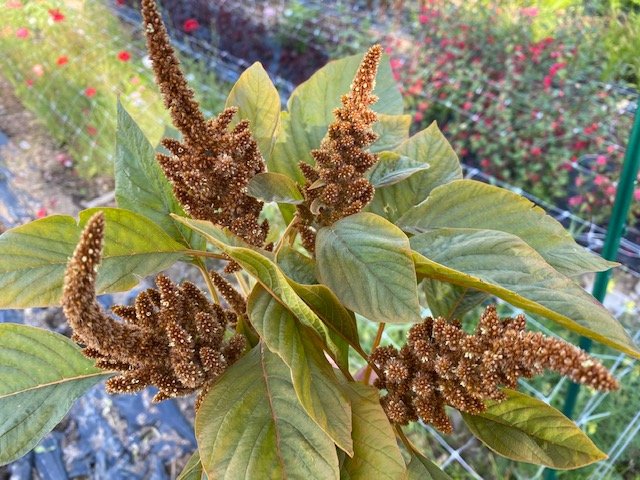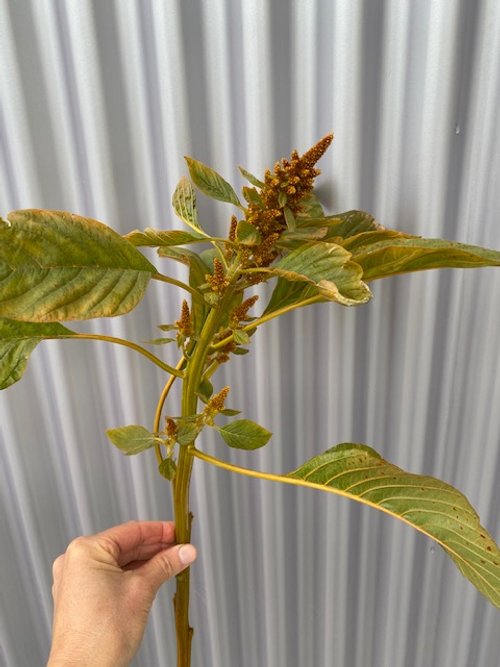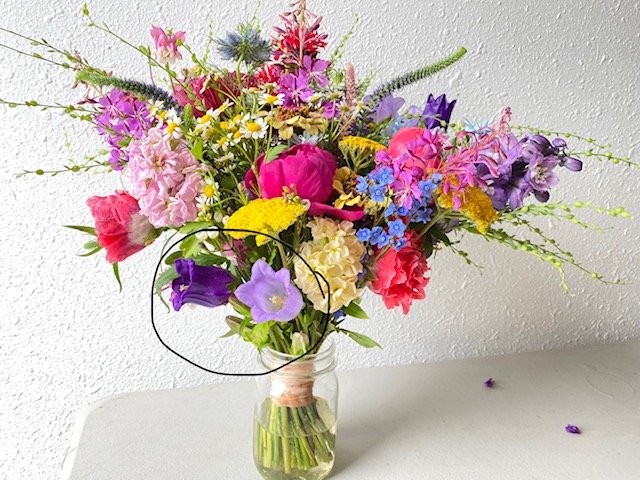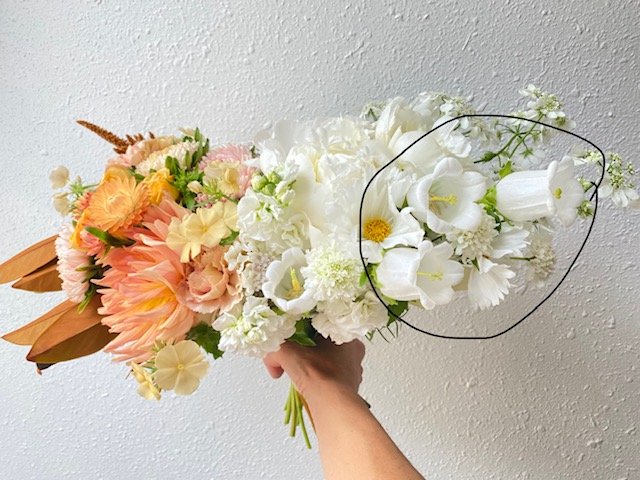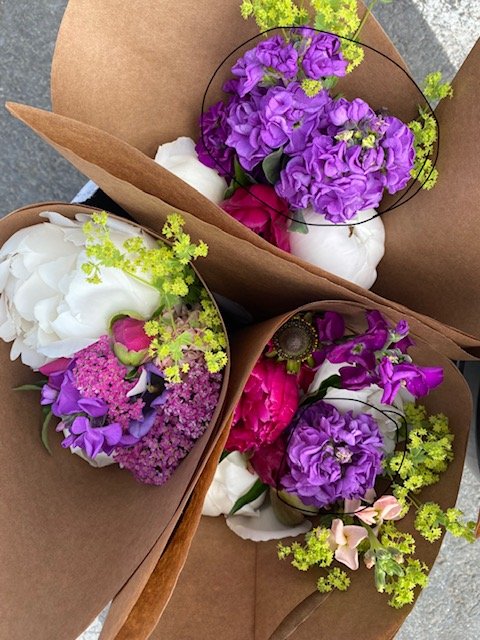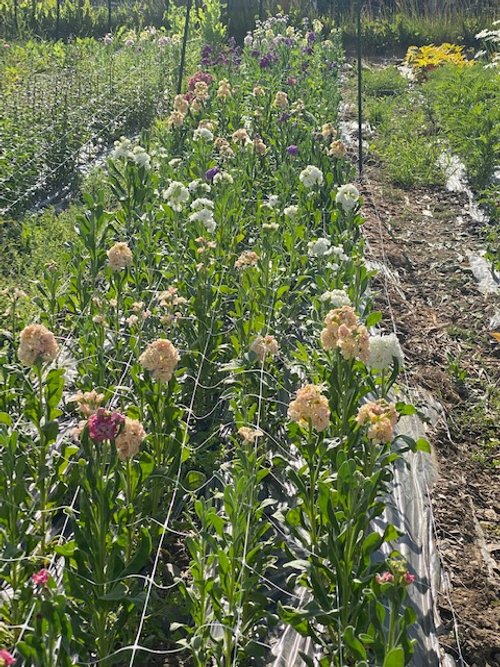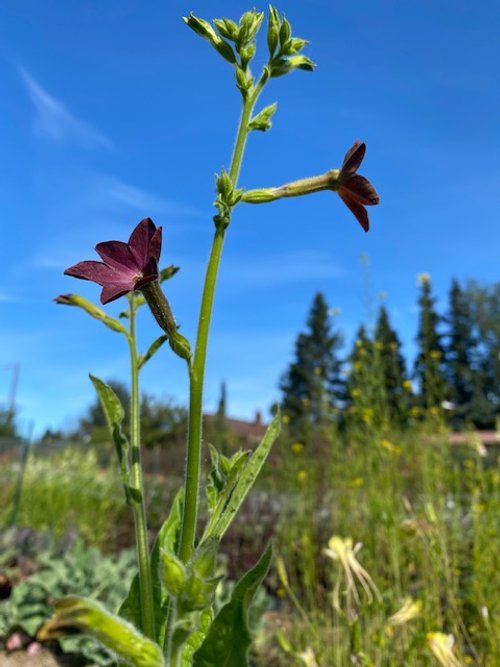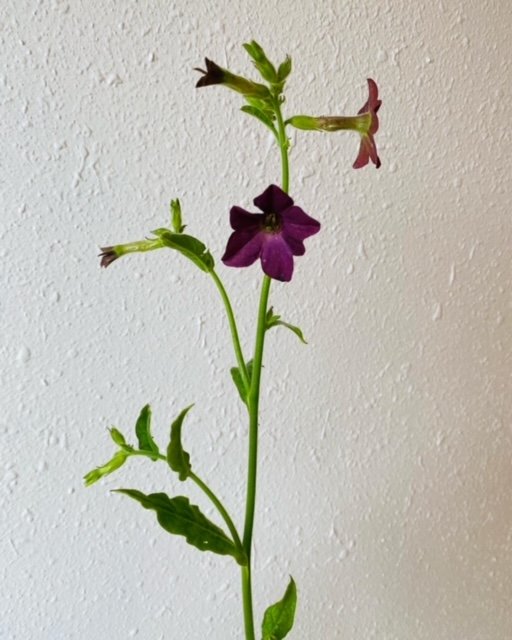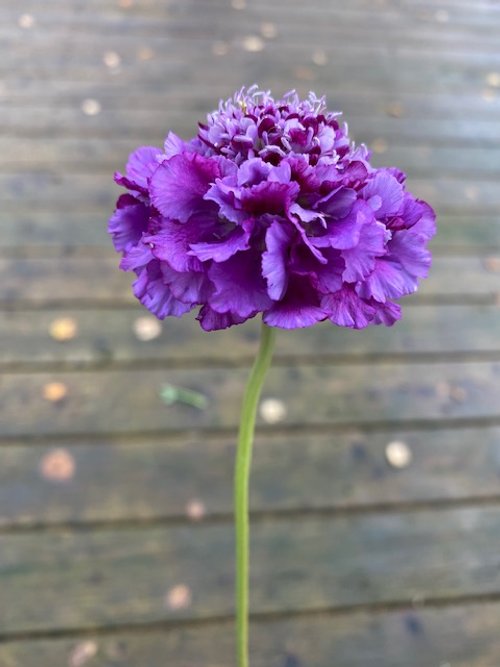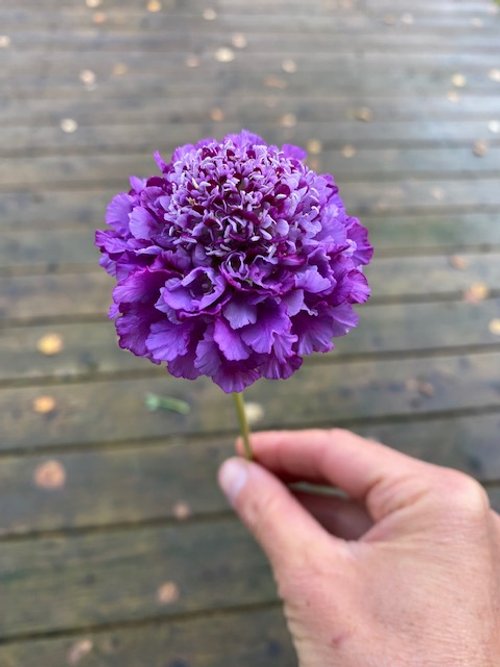Best of 2022: My Favorite Flowers from the Cutting Garden
Fall is time to dig out all the garden notes you’ve been taking and put that data to good use.
I’ve been reviewing my notes and I’m here to tell you what I absolutely LOVED in my cutting garden this year.
These are all annuals, grown specifically for my cutting garden.
I will follow this post with a blog on perennials. As they become a bigger part of my cutting garden, they deserve their very own article.
So without further ado, here are my top 9 Cutting Annuals for 2022:
Hot Biscuits Amaranth
Amaranth is a beautiful grain that has gorgeous foliage and stunning inflorescence.
Hot biscuits consistently out-produced all the other Amaranth varieties I grew in height and size. It was such an amazing fall-colored addition to bouquets.
I looks full and interesting in the garden and does amazing in the vase. I consistently had it in the vase for 2 + weeks.
In addition, you can hang it to dry for an everlasting bouquet.
Campanula
These are fun and delicate blooms that look fabulous in the garden.
I also used them consistently in wedding work this year. See above bridal bouquets!
In the vase they also lasted a good 1-2 weeks in good condition.
This is an all round excellent flower.
Cut these for the vase when the first flower opens up as the other buds will continue to open in the vase.
Vintage Brown and Iron Varieties Stock
Stock is an early season bloomer and helps fill the gap between tulips and all the other garden varieties.
Its smell cannot be beat.
The flowers are edible.
It lasts for a solid week + in the vase.
It comes in a variety of colors: white, apricot, purple, light and bright pink and yellow.
While a more challenging flower to grow as it must be started earlier, dislikes dry conditions (spring 2022 anyone!), and dislikes heat, it is well worth the challenge.
Salmon Frosted Breadseed Poppy
This one was a show stopper this year.
These were like little explosions in the vase. I cut them just as they start opening up and then they poof out into big fluffy balls of color.
While all poppies have a short vase life, this one did a little better than most. I got a solid 3+ days of blooming time in the vase.
That’s good news y’all!
Some flowers are more ephemeral than others.
Giant Orange Marigold
This flower makes my favorites list every year.
Here’s why:
It has a stunning and cheery color.
It smells heavenly.
It dries well.
It can last up to 3 weeks in the vase.
One plant pumps out blooms almost all summer long.
It’s easy to grow.
Bronze Queen Nicotiana
I LOVED this flower. It is delicate and whimsical and was the perfect addition to most of my bouquets.
As a garden flower it adds interest and texture but is a little sparse. It is not big, showy or bright.
In the vase is really where it shines.
It has a long vase life and it is so fun to look at those delicate little trumpet flowers!
Godetia
While this one didn’t make my initial “best of” list I’m listing it here for the home gardener.
I have not decided if I’m growing it again next year for my cutting garden but I would highly recommend it as an addition to any flower gardeners repertoire.
The pros: it lasts forever in the garden and in the vase - florets just keep opening up. It is short and sturdy for garden beds. It does well in shorter vases.
The cons: it is too short to use in most bouquets. The petals are easily damaged by rain.
Try it and see if you like it!
Rubenza Cosmos
Cosmos is a staple of mine every year.
These flowers are delicate and ephemeral. They look stunning and full in the garden and marvelous in the vase.
Part of their joy is that they can’t be shipped since they are so delicate.
You can only have these in your vase if you grow them yourself or buy from a local farm.
Rubenza is a magical deep maroon color with a vibrant yellow center. I find myself marveling at it’s beauty EVERY time I see it.
Oxford Blue Scabiosa
This is a tall plant with long strong stems.
It looks gorgeous and lively in the garden or you can cut it just when the first florets begin to open. When cut at this time it will last a solid 1-2 weeks in the vase.
Scabiosa loves cooler temperatures so does better in our cooler Alaskan summers.
How to harden off your plants
One of the most important parts of growing a successful garden is getting your plats hardened off.
What plants do you need to harden off?
Not all plants need hardening.
If you’re growing in a greenhouse, any plants going in there don’t need to go through this process.
Direct seeded plants don’t need hardening (maybe this is obvious). If you’re seeding directly into your garden beds, your seedlings will pop up all ready to deal head-on with the elements. This is a big benefit of direct seeding.
ALL other plants will need some hardening off.
Stock, snapdragons and other cool-hardy flowers getting hardened off under shade cloth.
Plants need some sort of gradual adjustment to outdoor conditions. After being cozy and warm indoors for their entire lives, it can be stressful to get popped directly outdoors.
The first plants I harden off in the spring are all the “cool-hardy’s”. These are plants that can survive a light frost and include the following:
Most salad greens
Spinach
Kale
Broccoli
Peas
Onions
Snapdragons
Bupleurum
Poppies
Rudbeckia
Calendula
Ammi
Strawflower
Campanula
Nigella
Most perennial flowers that are suited to your zone.
In general, to get fully hardened off, plants need about 3-5 days in the shade.
When nighttime temps are steadily in the 30s, the above varieties can be set out in a shady spot. In previous years I was moving my plants all over the place, from shady spot to shady spot.
This year I finally streamlined my process and started using hoops (made of thick wire and then stuck in the ground) and draping 30% shade cloth over the top.
My cool loving plants go in here and in 3-5 days we’re good for planting!
For warm-season plants, I’m a little more cautious. Ideally, before hardening these crops, our night temperatures would be in the 45 + zone. In Alaska, this can be a tall order!
So for these, I watch the weather and put them in their shade hoop when temps are in the 40s or higher. Using past last frost dates can work but since each spring is so different sometimes it’s hard to predict.
To help any early-planting anxiety you may have about cold temps, you can always add extra protection by putting a layer of Agribon over the hoop as well.
In fact, this would have helped me this season as I pushed it a little with a few varieties and killed off a few trays during a spotty frost that struck our neighborhood last week.
(sigh)
I guess it’s just a good reminder that a good fail is always the best way to be successful in the end!
30% shade cloth hooped over my cool-hardy flowers.
Garden Supply Check-list
Spring will be here faster than you think and with that, it’ll be planting time! So let’s get organized.
I want to get you set up early so you’re ready to break ground, or pop those seeds in the soil, as soon as you can.
With supply chain issues going on this year I also want to make sure you buy anything additional that you need soon so you have EVERYTHING you need for a great growing season.
Here’s my challenge to you: over the next 10 days, grab this checklist and head into your garden shed for an early season inventory!
Seeds - inventory what you have - most seeds are viable for 2-3 years
Potting soil for seed starting
Grow lights
Shelving for your plants and lights
Trays and domes - you can use these again and again just be sure to wash before planting
Heat mats & thermostat
Timer for your lights
4 packs or 6 packs - you can use these again and again just be sure to wash before planting
3 inch pots or 4 inch pots - you can use these again and again just be sure to wash before planting
Gallon pots - you can use these again and again just be sure to wash before planting
Plant labels - buy or make your own
Dish gloves or latex gloves - for seed sowing indoors these help keep my hands from getting all dried out
Watering can - I like a kids specific one for watering indoors
Soil test - DIY kit or identify a lab to send out to
Organic soil amendments per your soil test
Compost - home-made or commercial
Trowel
Weeding tools
Pitch fork or broad fork
Bed prep rake or stiff tined rake
Pots and planters and/or garden beds - I know they’re all covered in snow, just make a plan, especially if you need more
Trellising and staking supplies
Garden journal or calendar
Your garden plan and garden map
Garden gloves - I love having a leather pair and a more waterproof pair
Knee pads or equivalent
Did I forget anything? Comment below to share your must-haves for the season.
Best of 2020: My Favorite Varieties from the Veggie Garden
Corvair is a slow to bolt spinach variety that needs a place in every home garden.
In addition to growing flowers, I grow a big veggie garden in our backyard.
Every year our lawn gets smaller and our veggie garden gets bigger.
Here are some of my favorite veggies from the garden this year:
Tomato: Sun Gold. A sweet, early and prolific cherry tomato. The past two years I’ve been thinking: “maybe I should just grow all Sun Golds!” But I also like to have variety.
You will not be disappointed. I grow mine in an unheated hoop house. Next year I will trial these outdoors.
Kale: Red Russian. I’ve been growing Red Russian for six years. It is just my absolute favorite kale year after year.
It’s meaty and sweet in the fall. Plus you can grow it as a baby green by planting densely OR grow into a large plant for bunching. Once cut and massaged with dressing it makes THE BEST kale salad.
And get this folks, we still have kale in the garden now (it’s November as I write this)! We planted a HUGE bed of kale early in the summer. The leaves are frozen but you can go pick and they saute into an amazingly sweet and delicious side dish.
Carrot: Yaya. A yummy 5-6 inch sweet and tender carrot. Great for eating right out of the garden. With kids around, I just can’t keep carrots in the ground till the end of summer :)
Broccoli: Blue Wind and Belstar. I loved both of these varieties. Delicious and huge! Once the main head on Belstar is harvested it goes on to produce lots of side shoots. Blue Wind, not so much. It’s more of a one-and-done variety.
Cucumber: Socrates. A great cuke for Alaska. 52 days to maturity (once transplanted out). It’s seedless, sweet and tender. The kids (and myself) ate these like candy all summer long!
I’d like to try these outdoors next year to see how they perform. But in my unheated hoop house, they did amazing in pots. I trellis these straight up to the roof of the hoop house in order to squeeze in more plants.
Zucchini: Dunja. A classic, high-yielding zucchini that I grow every year! Don’t make the mistake and grow these too big. Although it’s fun to have big zucchini in the garden, they are the most succulent when picked at the proper stage (when fruits are 6-8 inches long).
Cilantro: Calypso. If you avoid growing cilantro because it bolts too fast, try this one! It is the slowest to bolt! Then when it does, you can cut the flowers to put in a vase (they smell heavenly) or wait till it forms seeds and use them as fresh coriander. Yum!
Spinach: Corvair. A delicious, juicy spinach. This is slow to bolt, so does well into the early summer.
And of course there are more!
If you need a suggestion for a certain variety, ask below in the comment section OR send me an email at turnstonefarm@gmail.com.
There’s nothing I love more than talking about gardening.
June 15th Two Minute Garden Tour
As the days grow longer the garden is slowly coming along. Every year there is a point a few weeks after transplanting out that everything really starts to take off!
Here you can see that in the first part of the video. Most of these plants were planted over a month ago. And they’re getting huge!!
I finished planting (or at least filled all the beds) a couple weeks ago. Now I’ll just fill in as things get cut.
I had a super successful tulip harvest this year and sold every bloom through my home delivery program (and one wedding). What fun!! Thanks to EVERYONE who supported the roll out of home deliveries :) I’m planning to continue it through the summer as long as I have blooms available after my subscription customers are taken care of :)
So without further delay - here is my digital June 15th garden tour!


